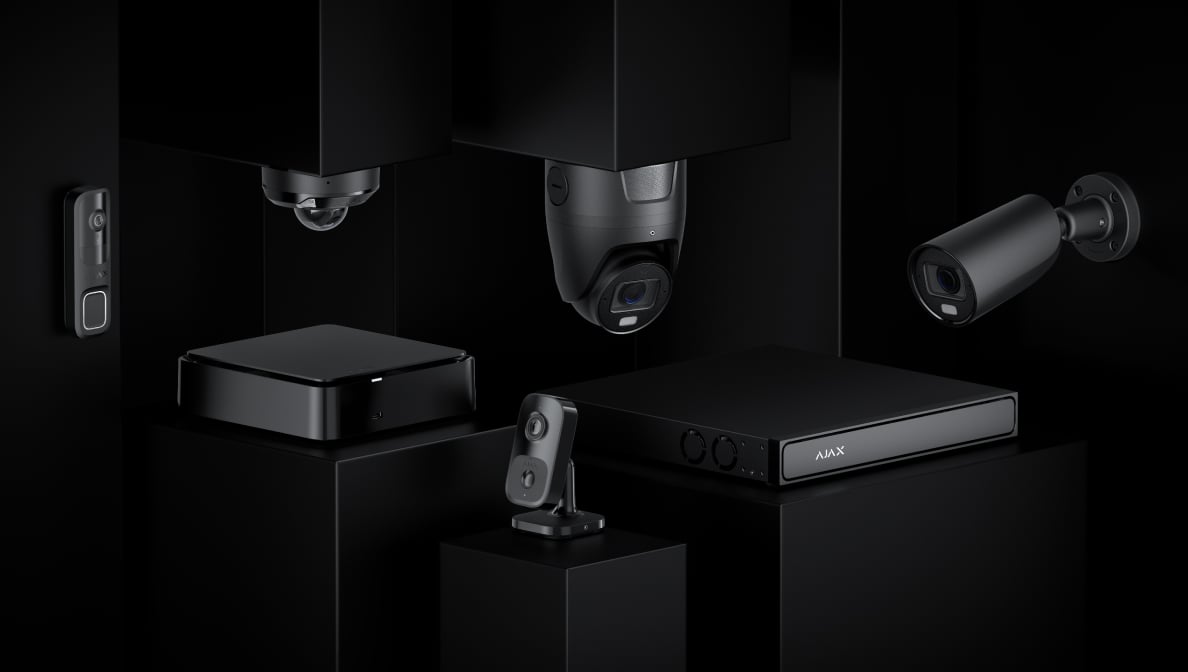
Ajax air quality monitors
Smart air quality monitors with temperature, humidity, and CO₂ sensors

Explore Ajax firsthand
Ajax offers more than just protection. Experience the full potential of Ajax solutions — with advanced features, exceptional reliability, and an unmatched user experience.
Indoor air quality management
LifeQuality monitors build an extensive air quality monitoring system, evaluating air quality dynamics to create ideal indoor conditions — at home, in the office, at school, or in a retail facility. An Ajax system equipped with LifeQuality and automation devices can turn appliances like ventilators and humidifiers on or off when air quality indicators deviate from comfortable levels.
Explore the unique features of Ajax air quality monitors
Medical-grade accuracy and automation scenarios
LifeQuality monitors feature sensors with medical-grade measurement accuracy. The non-dispersive infrared sensors provide accurate CO₂ data, unaffected by air pollutants such as aerosols and steam. The industrial-grade digital sensors measure relative humidity and temperature. Ajax automation devices and scenarios effortlessly keep all indicators within the preferred range.

Data-driven microclimate
The Ajax Cloud server stores air quality history for up to 2 years. This database is accessible at any moment to view, track, and analyze trends over various time frames. With Ajax PRO Desktop, it's easy to set up a comprehensive climate monitoring system for buildings of any scale and purpose.

Power consumption and productivity are under control
LifeQuality monitors streamline power consumption management using scenarios and allow for expense control. Additionally, monitoring CO2 levels helps sustain focus and productivity, maintaining optimal working conditions at home or in the office. LifeQuality's advanced monitoring features make it a valuable tool for creating a healthy environment.

Ajax product categories
In an Ajax system, you can combine devices of all product categories: Intrusion protection, Video surveillance, Fire and life safety, or Comfort and automation. Create the system to suit your needs and manage it in a single interface.
Understanding Air Quality Monitors: Key Features and Applications
Air quality monitors are essential devices for maintaining healthy and comfortable indoor environments. Equipped with sensors to track temperature, humidity, and CO₂ levels, these monitors enable real-time air quality management, improving well-being, productivity, and energy efficiency in various settings.
How Do Air Quality Monitors Work?
Air quality monitors use precise sensors to measure critical indoor air parameters:
- CO₂ levels: Non-dispersive infrared sensors provide consistent readings of CO₂ concentration, unaffected by other air pollutants like aerosols or steam.
- Temperature and humidity: Industrial-grade digital sensors accurately measure temperature and relative humidity, comprehensively understanding indoor climate conditions.
These accurate measurements are the foundation for creating automated responses that help maintain a stable and comfortable environment.
Benefits of Real-Time Air Quality Data
Monitoring indoor air quality brings numerous benefits, from enhancing well-being and productivity to reducing energy costs.
Automation for Ideal Indoor Conditions
Air quality monitors allow for smart automation, adjusting indoor systems based on live data. For example, when CO₂ levels rise, the monitor can trigger ventilation to ensure fresh air flow or activate humidifiers to adjust humidity levels. These automation scenarios ensure optimal air quality without requiring manual adjustments, helping maintain comfort and well-being in spaces ranging from homes to offices and schools.
Historical Data for Long-Term Insights
With securely stored air quality data, users can access and analyze historical trends to better understand their environment. This tracking capability enables tailored improvements in climate management based on specific needs. For large buildings, historical data is instrumental in identifying areas that need more ventilation or climate control, optimizing the indoor environment consistently.
Enhancing Energy Efficiency and Productivity
Maintaining balanced air quality has additional benefits for productivity and energy management:
- Improved focus and productivity: Monitoring CO₂ levels helps keep the air fresh, which supports better concentration and productivity, especially in workspaces.
- Efficient energy use: By automating climate systems only when necessary, air quality monitors help reduce power consumption, translating to lower costs and more sustainable energy use.
Applications of Air Quality Monitors
Whether for personal use at home or on a larger scale in commercial settings, air quality monitors play a vital role in creating healthy and efficient environments. They are well-suited for various spaces, including homes, offices, educational facilities, and retail environments, where air quality directly impacts health, comfort, and performance.
Conclusion
Air quality monitors offer a powerful tool for managing indoor environments by accurately measuring and responding to temperature, humidity, and CO₂ level changes. Through automated responses, historical data analysis, and energy-saving benefits, these monitors make it easy to maintain an ideal indoor climate for any space.




